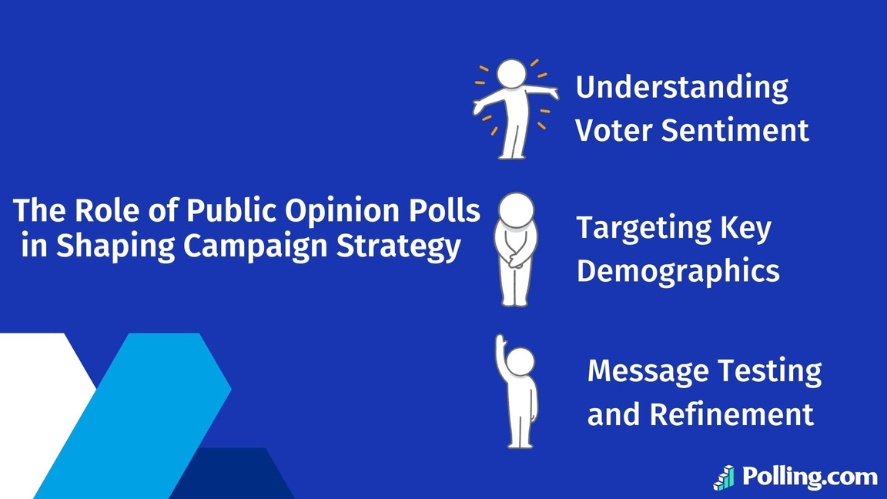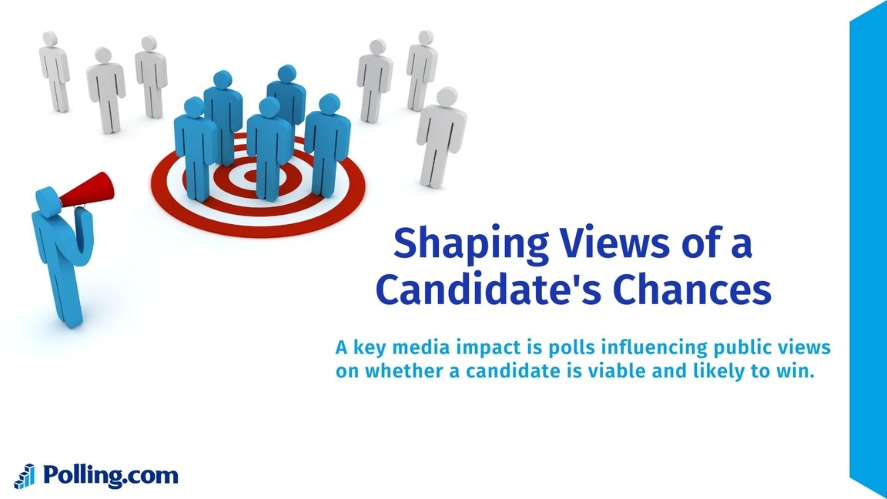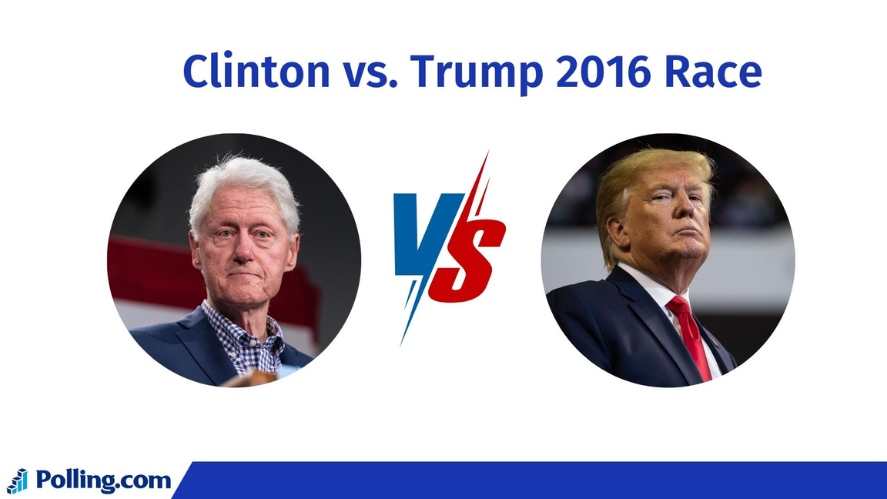
How Public Opinion Polls Shape Political Campaigns
Public opinion polls have become an integral part of modern political campaigns. By surveying a sample of potential voters, these polls provide a snapshot of public sentiment at any given time.
The results help political candidates and parties see how they’re perceived by the public.
Polls play a major role in shaping campaign decisions and determining where resources should be spent. In many cases, polls can even shape the direction of a campaign.
That said, public opinion polls have become a powerful tool in shaping political campaign strategies.
Polls aren’t just a way to measure public opinion—they directly affect how campaigns grow and how candidates connect with voters.
The Role of Public Opinion Polls in Shaping Campaign Strategy
So, what is public opinion? And how does polling work for elections? You may ask.
Public opinion refers to the collective views of voters on various political issues, candidates, and policies.
Public opinion polls enable campaigns to regularly take the pulse of the electorate, shaping a variety of core strategic decisions. By tracking public opinion data and voter sentiment over time, polls help campaigns identify areas of strength and weakness.

The data informs decisions about where to focus campaign resources, what messages to emphasize, and which voter segments to target.
Let’s explore three key ways polls help campaigns.
Understanding Voter Sentiment
Polls reveal what issues voters care about and how they feel about candidates or political issues.
Basically, opinion polls help campaigns keep up with voters’ attitudes and priorities in real time.
Well-done polls will divide voters demographically and geographically while asking specific questions for voters that give valuable insights.
For example, polls might show which issues voters care most about or how support for a candidate changes after big events, which might impact who is winning the election rn.
This public opinion data allows campaigns to match their messaging and policies better to what matters to voters.
Campaigns can also test their messages and ideas by using more polls and focus groups to make their plans and outreach better. Ongoing polling gives campaigns an up-to-date roadmap to sway undecided voters.
Targeting Key Demographics
Detailed demographic data from polls allows campaigns to identify and focus on crucial voter segments.
Polling usually divides voters by factors like gender voting statistics, age, income, race, education level, and region. Campaigns use this to find the voters that are most important to win over.
For example, they look at swing voters who could support either candidate. They also look at what age groups or locations favor them most.
With this information on hand, campaigns can target their messages and pay attention to these key groups, which can totally change the election results.
Message Testing and Refinement
Campaigns use polls to test how well their ideas, slogans, or ads work with voters before using them.
If messages test poorly, the political campaign can change or drop them. This helps campaigns figure out what messages work best and try to expand their reach to even more people,
This way, polls help campaigns connect with voters effectively and not waste efforts on losing political campaign strategies.
By watching how voters respond, successful campaigns can quickly change their messages and ads to make the most of good news or reduce the impact of scandals.
Read More: Best Practices for Political Orientation Surveys
Influence on Media Coverage
Polls also shape how campaigns are covered in the news media. They affect this in two ways:
1. Polls as News
Election coverage based on polling data is now standard for campaign media.
Major outlets have dedicated polling teams and often conduct surveys to feed this coverage demand. As new polls drop, media frames stories around results and trends to craft compelling campaign narratives.
For instance, if a candidate rises in the polls after a debate, coverage tends to portray them with positive momentum.
These stories can encourage voters to support the candidate, as they want to be part of a winning team. Campaigns time poll releases and spin to generate favorable coverage.
2. Shaping Views of a Candidate’s Chances
A key media impact is polls influencing public views on whether a candidate is viable and likely to win.
Scientists have studied a “bandwagon effect” where leading in polls attracts voter support just by making a candidate seem like they have the momentum. On the other hand, lagging in polls can lead to a downward trend in support.

Campaign media leverages this effect by covering front-runner candidates more positively and questioning the viability of those candidates who are not doing well in the polls.
This optimistic or skeptical framing becomes a feedback loop swaying voter preferences. Campaigns use selective poll results and messaging to drive these bandwagon effects through the media.
Fundraising and Resource Allocation
Beyond driving messaging and media narratives, opinion polls directly affect crucial campaign operations like fundraising and budgeting. Favorable polls provide fundraising boosts while results also optimize spending.
Using Polls to Attract Donors
One of the campaigns’ toughest jobs is persuading donors to invest in their candidate. Substantial polling numbers show potential donors that their candidate is worth investing in.
Most campaigns give major donors regular poll briefings and publicize positive results to attract small donors.
Seeing their candidate leading or rising in polls gives donors confidence that their money will matter.
Good polls also bring in data-driven political action committees with funds to spend. Campaigns leverage polls strategically to maximize fundraising.
Guiding Campaign Investments
Campaigns also use geographic and demographic survey breakdowns to optimize their limited budget.
Understanding how polling works for elections helps campaigns determine whether a candidate is strong or weak.
This allows campaigns to focus on the right areas for things like field offices, events, or local ads to regions in play. Candidates often visit key areas based on these polls.

Without this information, campaigns might waste resources on lost causes or miss unexpected openings.
Optimized spending guided by polls provides a strategic edge. Real-time polls even allow rapid shifting of resources to capitalize on trends.
The Pitfalls of Over-Reliance on Polls
While polls provide many strategic upsides, relying too heavily on polling data also carries significant risks that campaigns must consider.
Common problems include:
Margin of Error and Misleading Results
Polls aren’t perfect. They all have a margin of error because they only represent a population sample, and not everyone responds.
Low-quality polls may ask biased questions or include unbalanced groups of people, leading to inaccurate results. Different polls can show different numbers, so it’s essential to treat them as rough estimates rather than absolute truth.
Campaigns can get off track by trusting unusual poll results or ignoring the margin of error. Misreading polls has caused mistakes in the past, so it’s essential to carefully interpret the results.
Voter Burnout and Disengagement
With constant polling, voters can get tired of hearing about who’s ahead or behind all the time. This focus on numbers rather than issues can turn voters off.
Also, if polls make it seem like one candidate will definitely lose, their supporters might not bother voting. Overusing polls can hurt voter engagement and even weaken the democratic process.
Case Studies of Polling Impact on Historical Campaigns
Looking at the history of political campaigns where polls had clear impacts provides concrete examples of how opinion surveys have shaped political contests:
Obama’s 2008 Presidential Run
Barack Obama’s path to the 2008 Democratic nomination and general election win stands out as a case study in leveraging polls for competitive advantage. Obama’s team set new standards for responsive data-driven campaigning.
With massive polls, Obama compiled detailed data on all voter groups.
This enabled advanced message targeting and identified previously unengaged youth and minority voters that Obama mobilized. Obama maintained consistent poll leads while rivals chased shifting tides.
Clinton vs. Trump 2016 Race
The 2016 match between Hillary Clinton and Donald Trump also revolved heavily around opinion polling.
Clinton anticipated comfortable wins based on initial solid polls. But numbers shifted after Comey’s late email disclosure.

Clinton’s campaign trusted predictive models over polls showing tightening key state races she narrowly lost.
Meanwhile, Trump exploited anti-establishment distrust of polls to drive a high turnout rate. The failures and surprises of the 2016 polls shaped the outcome.
Read More: Polling.com Reveals Voter Trends for the 2024 US Elections
Conclusion
Public opinion research polling has grown from an occasional campaign tool into the lifeblood of modern political contests at all levels.
Campaigns today harness polls to craft messages, steer media narratives, target voters, fundraise, and optimize spending. When applied correctly, accurate polling provides proven strategic value.
However, polls cannot replace human judgment in decision-making. By combining polling insights with experienced strategic analysis, campaigns can thrive in our data-driven age without losing sight of the human elements crucial for success.
